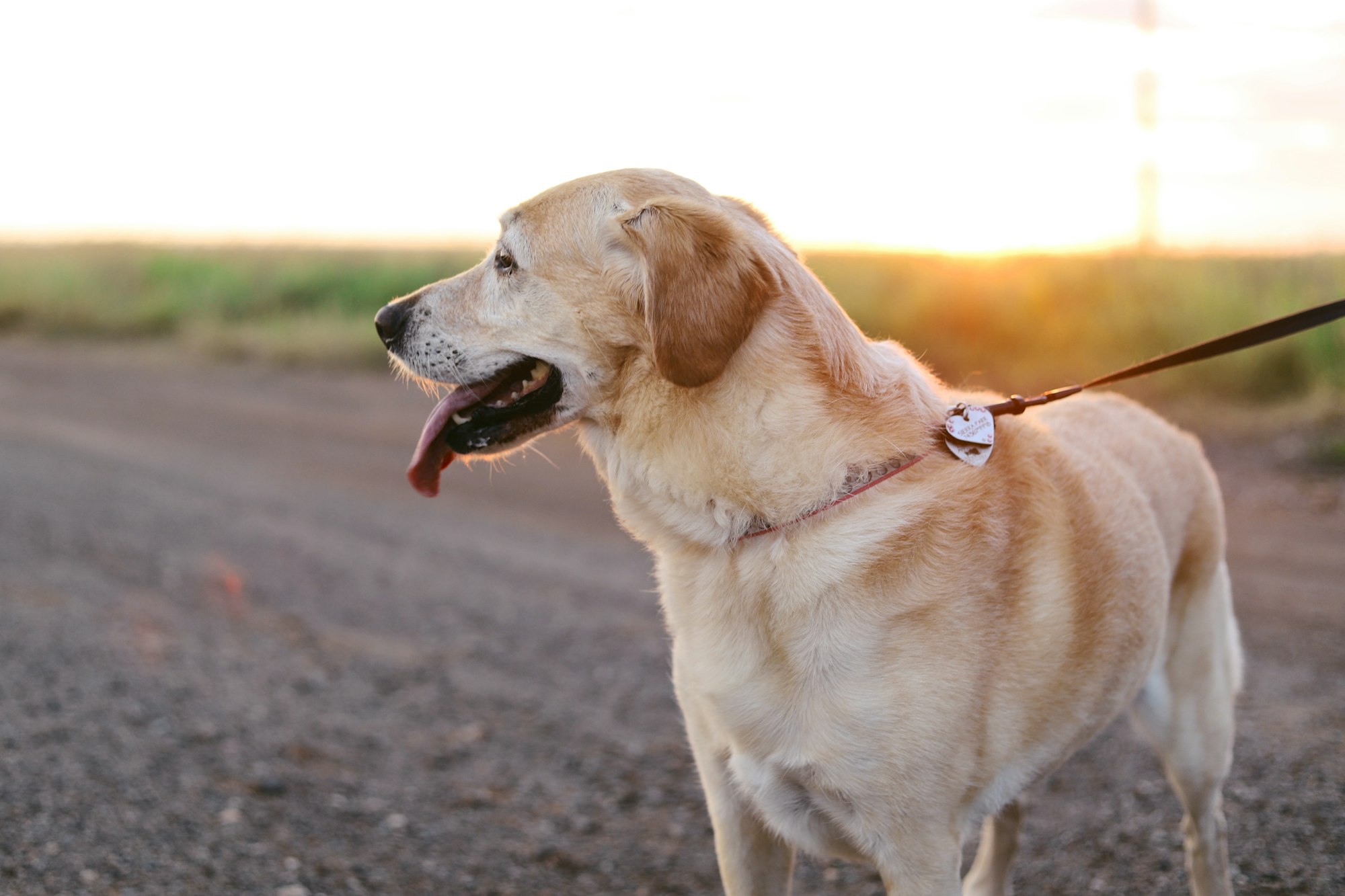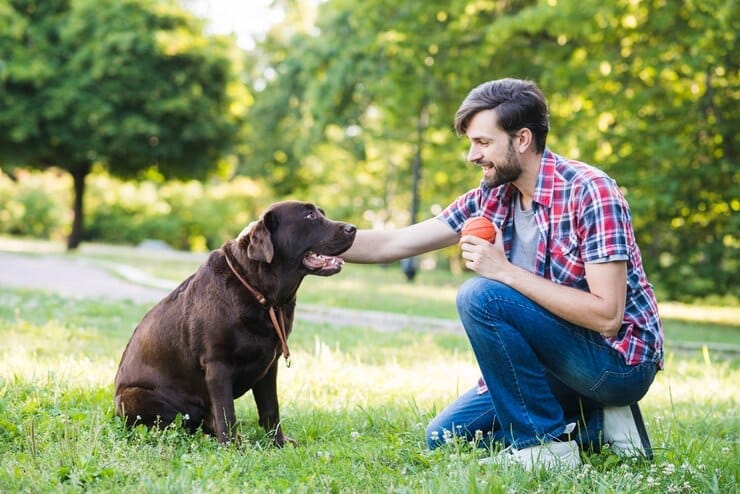Picture this: you're giving your furry friend a much-needed nail trim at home, and you suddenly accidentally cut the quick. Your dog yelps, and there's blood. You wonder, "Can I walk my dog after cutting the quick?" Don't worry; we've all been there. This comprehensive guide will explore the dos and don'ts of walking your dog after an incident like this.
Understanding the Quick and Its Importance
First things first, let's understand what the quick is. The quick is your dog's nail's blood vessels and nerve-rich core. It's sensitive and can bleed heavily if cut. Accidentally cutting the quick while trimming your dog's nails is a common issue pet owners face.
So, Can I Walk My Dog After Cutting the Quick?
The short answer is: it depends. The severity of the injury, your dog's pain tolerance, and how you manage the situation will all influence whether or not you should take your pup out for a walk.
Assess the Situation: Is It a Minor or Major Injury?
The injury might be minor in some cases, with just a small nick to the quick and minimal bleeding. In such a situation, you may be able to walk your dog, but with some precautions.
On the other hand, if the injury is more severe – think profuse bleeding or a visibly upset dog – it's best to hold off on that walk. Instead, focus on treating the injury and monitoring your dog's comfort level.

Treating the Injury: Quick Fixes and Long-Term Care
Stopping the Bleeding
Your primary concern after cutting the quick should be stopping the bleeding. Applying styptic powder or cornstarch to the wound can help clot the blood and quickly stop bleeding. If you don't have either on hand, you can use a clean cloth or tissue to apply pressure to the wound for a few minutes.
Cleaning and Protecting the Wound
Once the bleeding has stopped, clean the wound gently with mild soap and water. Avoid using alcohol or hydrogen peroxide, as they can cause pain and delay the healing process. After cleaning, cover the wound with a bandage or gauze after cleaning to protect it from dirt and bacteria.
Monitoring for Infection
In the days following the incident, keep an eye on the wound for signs of infection, such as redness, swelling, or discharge. If you notice these symptoms, consult your veterinarian for further guidance.
Taking a Stroll: Precautions and Tips for Walking Your Dog After Cutting the Quick
Now that you've treated the injury and assessed your dog's comfort level let's discuss some precautions and tips for walking your dog after cutting the quick.
Wait for the Bleeding to Stop
Ensure the bleeding stops and the wound is clean and protected before taking your dog for a walk. Walking on a bleeding nail can cause further pain and injury.
Use a Protective Bootie or Sock
If your dog is comfortable walking, consider using a protective bootie or sock to shield the injured nail from dirt and debris. This will also help prevent your dog from licking the wound and possibly introducing bacteria.
Keep the Walk Short and Slow
Your dog may feel pain or discomfort, so keep the walk short and slow. Avoid rough or uneven terrain, as it can stress the injured nail more.
Monitor Your Dog's Behavior
Pay close attention to your dog's behavior during the walk. If they're limping or showing signs of pain, it's time to head home and give them some rest. Always prioritize your dog's comfort and well-being.

Preventing Future Quick-Cutting Incidents: Tips for Safe Nail Trimming
Preventing future quick-cutting incidents is essential to keep your dog comfortable and healthy. Here are some tips for safe nail trimming:
Invest in a Quality Pair of Nail Clippers
Using a high-quality pair of nail clippers specifically designed for dogs can help prevent accidents. Guillotine-style or scissor-style clippers are popular, but consult your veterinarian or groomer for the best option for your dog's breed and size.
Learn Your Dog's Nail Anatomy
Understanding the structure of your dog's nails can help you avoid cutting them quickly. In dogs with light-colored nails, the quick is usually visible as a pinkish area within the nail. For dogs with dark nails, identifying the quick is more challenging, so trim a little at a time and look for a dark spot in the nail's center, indicating the quick's location.
Trim Nails Regularly
Regular nail trims are essential to keep your dog's nails healthy and prevent overgrowth of the quick. Trimming the nails every 3-4 weeks will encourage the quick to recede and reduce the risk of cutting them accidentally.
Use a Nail Grinder for Precision
For some pet owners, using a nail grinder can provide more control and precision when trimming their dog's nails. Nail grinders gradually file down the nail, making it easier to avoid cutting them quickly.
Try Using a Scratch Board
Unlike clippers or other tools, scratch boards are less likely to cause injury or pain, making them a safer option for dogs with sensitive paws or those prone to accidents during nail trimming.
Seek Professional Help
If you're uncomfortable or need clarification about trimming your dog's nails, consult a professional groomer or veterinarian. They can provide guidance or perform the service for you, ensuring your dog's nails are trimmed safely and correctly.
Building Confidence After Cutting the Quick: Re-establishing Trust with Your Dog
After an incident like cutting the quick, your dog may become anxious or fearful during future nail-trimming sessions. It's crucial to rebuild your dog's trust and create a positive association with nail trimming.
Start with Positive Reinforcement
Use treats, praise, and gentle touch to create a positive atmosphere during nail trimming sessions. Reward your dog for allowing you to handle its paws and stay calm. This is known as positive reinforcement.
Gradual Desensitization
Introduce nail-trimming tools gradually, allowing your dog to sniff and investigate them without fear. Start by handling your dog's paws without the clippers, then slowly introduce the sound of the clippers without cutting. Finally, trim one nail at a time, rewarding your dog after each successful trim.
Stay Calm and Patient
Your dog can sense your emotions, so remaining calm and patient during nail-trimming sessions is essential. Your dog will likely feel the same if you're nervous or frustrated. Take deep breaths, speak soothingly, and take breaks if needed.
Create a Routine
Establishing a routine can help your dog become more comfortable with nail trimming. Choose a specific time, location, and order in which you trim your dog's nails. This consistency will help your dog understand what to expect, reducing anxiety and fear.

Walking Your Dog: Ensuring a Safe and Enjoyable Experience for Both You and Your Pup
As a dog owner, you're responsible for ensuring your dog gets the exercise and stimulation they need through regular walks. Here are some tips to make your walks safe and enjoyable for both you and your pup:
Choose the Right Leash and Collar
Select a leash and collar appropriate for your dog's size and breed. A sturdy, fixed-length leash and a well-fitted collar or harness will provide control and security during walks.
Teach Proper Leash Manners
Train your dog to walk politely on a leash without pulling or lunging. This will make walks more enjoyable and prevent injury to you and your dog.
Pick up After Your Dog
Be a responsible pet owner by always picking up your dog's waste during walks. This keeps the environment clean and prevents the spread of diseases.
Be Aware of Your Surroundings
Pay attention to your surroundings during walks, watching for potential hazards or distractions. Be prepared to guide your dog away from dangerous situations or to adjust your walking route if needed.
Provide Mental Stimulation
Incorporate mental stimulation into your walks by changing your route, allowing your dog to sniff and explore, or practicing obedience commands during the walk. This helps keep your dog engaged and mentally challenged.
The Importance of Exercise and Mental Stimulation for Your Dog's Well-being
Regular exercise and mental stimulation are essential for your dog's overall health and happiness. By understanding the benefits and incorporating various activities into your dog's routine, you can help them lead a fulfilling life.
Physical Health Benefits
Adequate exercise helps maintain your dog's optimal weight, reducing the risk of obesity-related health issues like diabetes and joint problems. It also promotes cardiovascular health, muscle strength, and flexibility, contributing to your pet's longer and healthier life.
Mental Health Benefits
Regular exercise and mental stimulation help prevent boredom and anxiety in dogs. A well-exercised and mentally engaged dog is less likely to engage in destructive behaviors or develop separation anxiety.
Socialization Opportunities
Regular walks and outdoor activities allow your dog to socialize with other dogs and people. Proper socialization is crucial for your dog's overall behavior and well-being, as it helps them feel more at ease in various situations.
Alternative Forms of Exercise and Mental Stimulation
If you need to temporarily restrict your dog's walks due to a quick-cutting incident or another reason, consider alternative forms of exercise and mental stimulation to keep them engaged and healthy. Here are some ideas:
Indoor Fetch
Play a game of fetch in a hallway or large room, using a soft toy to avoid damage to your home. This can help burn off energy and provide some physical activity for your dog.
Tug-of-War
Engage your dog in a friendly game of tug-of-war with a sturdy toy. This can provide a fun and interactive way for your dog to get some exercise indoors.
Puzzle Toys and Food-Dispensing Toys
Invest in puzzle toys or food-dispensing toys to keep your dog mentally stimulated. These toys challenge your dog to problem-solve and engage their mind, providing an alternative form of mental exercise.
Obedience Training and Trick Training
Work on obedience training or teach your dog new tricks to engage their minds. This mental stimulation can help strengthen the bond between you and your dog while keeping them mentally sharp.
Flirt Pole
Using a flirt pole can help stimulate a dog's natural prey drive and encourage them to chase and play, providing mental and physical exercise that can help reduce destructive behaviors and anxiety.
A Holistic Approach to Your Dog's Health and Happiness
Understanding the importance of regular exercise and mental stimulation for your dog's overall well-being is essential. Whether you're walking your dog after cutting the quick or incorporating alternative forms of exercise, always prioritize your dog's comfort and safety. Doing so will help your furry companion lead a happy, healthy, and fulfilling life.
For more helpful articles about pet-parenting tips, check out the Off Leash blog at TryFi.com.
Want to know more about TryFi.com? The Fi Dog Collar is a GPS tracking collar that not only keeps track of your dog’s location, activity levels, and sleep patterns, but it also alerts you if your dog escapes your backyard. This is the fastest way to find your dog after an escape. Try the Fi Dog Collar today!

